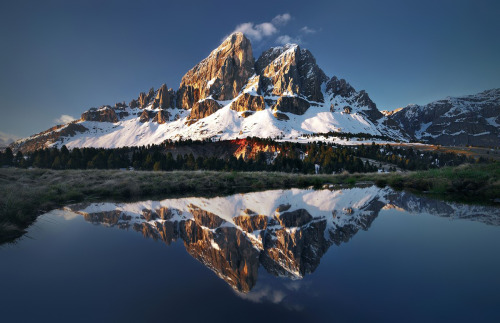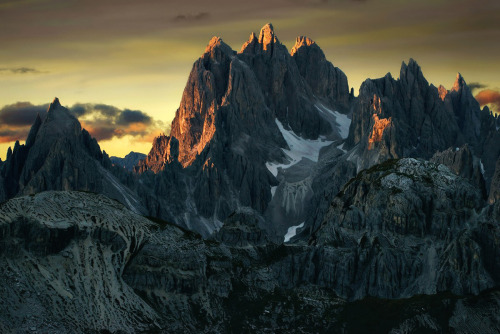Fun Science Fact:
Fun Science Fact:
If you just got excited, you’re a nerd
More Posts from Space-and-stuff-blog1 and Others

Juno: Jupiter and the Galilean moons from 10.9 million km away, June 21st 2016. The probe will enter orbit around Jupiter on July 4th. Image credit: NASA/JPL-Caltech/MSSS

Colorado Perseid Meteor Shower Spherical Panorama 360x180 degrees
js

This gigantic lens, built for NASA to record space launches, is up for sale: http://bokeh.digitalrev.com/article/gigantic-1000mm-nasa-lens-up-for-sale

Hubble Image of NGC 3324
Located in the Southern Hemisphere, NGC 3324 is at the northwest corner of the Carina Nebula (NGC 3372), home of the Keyhole Nebula and the active, outbursting star Eta Carinae. The entire Carina Nebula complex is located at a distance of roughly 7,200 light-years, and lies in the constellation Carina.
Credit: NASA, ESA, and The Hubble Heritage Team (STScI/AURA)

Hubble Unveils Monster Stars
The image shows the central region of the Tarantula Nebula in the Large Magellanic Cloud. The young and dense star cluster R136 can be seen at the lower right of the image. This cluster contains hundreds of young, blue stars, among them the most massive stars detected in the universe so far. Astronomers using NASA’s Hubble Space Telescope were able to conduct a detailed imaging and spectroscopic study of the central and most dense region of this cluster. Here they found nine stars with masses greater than 100 times the mass of the sun. The cluster is located 170,000 light-years away from Earth.
Image credit: NASA Hubble

Cassini: Saturn, June 12th 2016
W00099641.jpg was taken on 2016-06-12 07:28 (UTC) and received on Earth 2016-06-12 14:57 (UTC). The camera was pointing toward SATURN, and the image was taken using the CL1 and IR1 filters. This image has not been validated or calibrated. A validated/calibrated image will be archived with the NASA Planetary Data System.
Image Credit: NASA/JPL-Caltech/Space Science Institute
-
 amisetxiles liked this · 1 year ago
amisetxiles liked this · 1 year ago -
 an-unknown-and-useless-planet liked this · 2 years ago
an-unknown-and-useless-planet liked this · 2 years ago -
 freya1022 liked this · 2 years ago
freya1022 liked this · 2 years ago -
 graceful-chaos liked this · 2 years ago
graceful-chaos liked this · 2 years ago -
 brandithereal reblogged this · 3 years ago
brandithereal reblogged this · 3 years ago -
 brandithereal liked this · 3 years ago
brandithereal liked this · 3 years ago -
 bladeghost liked this · 4 years ago
bladeghost liked this · 4 years ago -
 bladeghost reblogged this · 4 years ago
bladeghost reblogged this · 4 years ago -
 iamfirewhiskey reblogged this · 5 years ago
iamfirewhiskey reblogged this · 5 years ago -
 iamfirewhiskey liked this · 5 years ago
iamfirewhiskey liked this · 5 years ago -
 2am-euphoria liked this · 5 years ago
2am-euphoria liked this · 5 years ago -
 immabeahealthybitchjustyouwait liked this · 5 years ago
immabeahealthybitchjustyouwait liked this · 5 years ago -
 kit-kat57 reblogged this · 5 years ago
kit-kat57 reblogged this · 5 years ago -
 cuilective reblogged this · 5 years ago
cuilective reblogged this · 5 years ago -
 baknbizniz liked this · 5 years ago
baknbizniz liked this · 5 years ago -
 scentlessapprenticeship liked this · 6 years ago
scentlessapprenticeship liked this · 6 years ago -
 dubiousspectrum reblogged this · 6 years ago
dubiousspectrum reblogged this · 6 years ago -
 ace-up-my-sleeve liked this · 6 years ago
ace-up-my-sleeve liked this · 6 years ago -
 archiveee1234 reblogged this · 6 years ago
archiveee1234 reblogged this · 6 years ago -
 kyanile liked this · 6 years ago
kyanile liked this · 6 years ago -
 unfathomable-satellite-debris reblogged this · 6 years ago
unfathomable-satellite-debris reblogged this · 6 years ago -
 assiduoustudent reblogged this · 6 years ago
assiduoustudent reblogged this · 6 years ago -
 assiduoustudent liked this · 6 years ago
assiduoustudent liked this · 6 years ago -
 kiwiiscool liked this · 6 years ago
kiwiiscool liked this · 6 years ago -
 kiwiiscool reblogged this · 6 years ago
kiwiiscool reblogged this · 6 years ago -
 satan-is-a-fangirl reblogged this · 6 years ago
satan-is-a-fangirl reblogged this · 6 years ago -
 satan-is-a-fangirl liked this · 6 years ago
satan-is-a-fangirl liked this · 6 years ago -
 todayintokyo liked this · 6 years ago
todayintokyo liked this · 6 years ago -
 epimeliad liked this · 6 years ago
epimeliad liked this · 6 years ago -
 hey-bug reblogged this · 6 years ago
hey-bug reblogged this · 6 years ago -
 sciencejerk0013 reblogged this · 6 years ago
sciencejerk0013 reblogged this · 6 years ago -
 blackkitten0013 liked this · 6 years ago
blackkitten0013 liked this · 6 years ago -
 rociomz liked this · 6 years ago
rociomz liked this · 6 years ago -
 lucifersangelhellsmessenger reblogged this · 6 years ago
lucifersangelhellsmessenger reblogged this · 6 years ago -
 shcctingstartm liked this · 6 years ago
shcctingstartm liked this · 6 years ago -
 puppetmade-moved reblogged this · 6 years ago
puppetmade-moved reblogged this · 6 years ago -
 jennyfromthebayou reblogged this · 6 years ago
jennyfromthebayou reblogged this · 6 years ago -
 persephone977 reblogged this · 6 years ago
persephone977 reblogged this · 6 years ago -
 persephone977 liked this · 6 years ago
persephone977 liked this · 6 years ago -
 hey-bug liked this · 6 years ago
hey-bug liked this · 6 years ago -
 betterthanclocks reblogged this · 6 years ago
betterthanclocks reblogged this · 6 years ago -
 laurenbrightwing liked this · 6 years ago
laurenbrightwing liked this · 6 years ago -
 thedarkbunny reblogged this · 6 years ago
thedarkbunny reblogged this · 6 years ago
Just Space, math/science and nature. Sometimes other things unrelated may pop up.
119 posts













